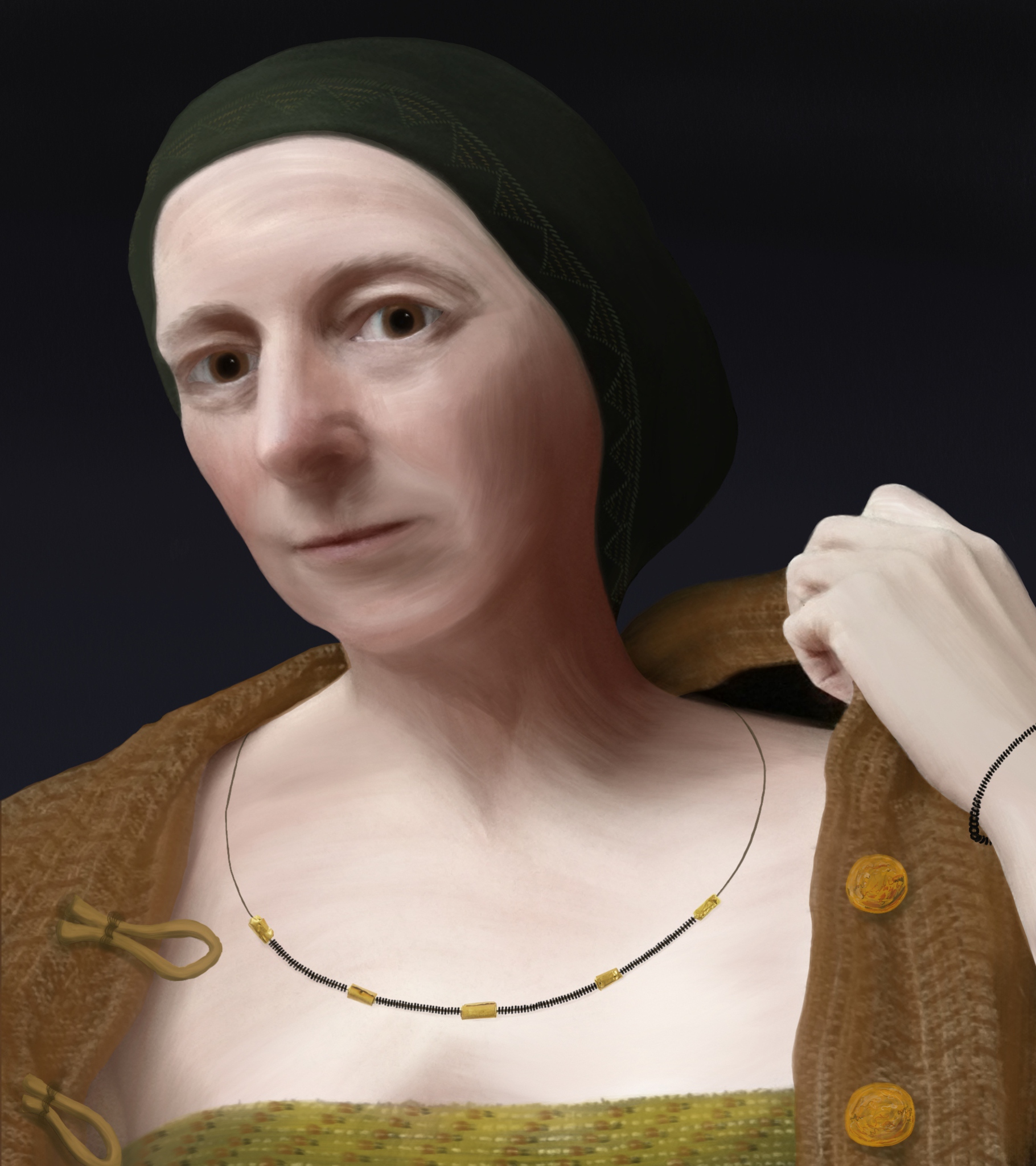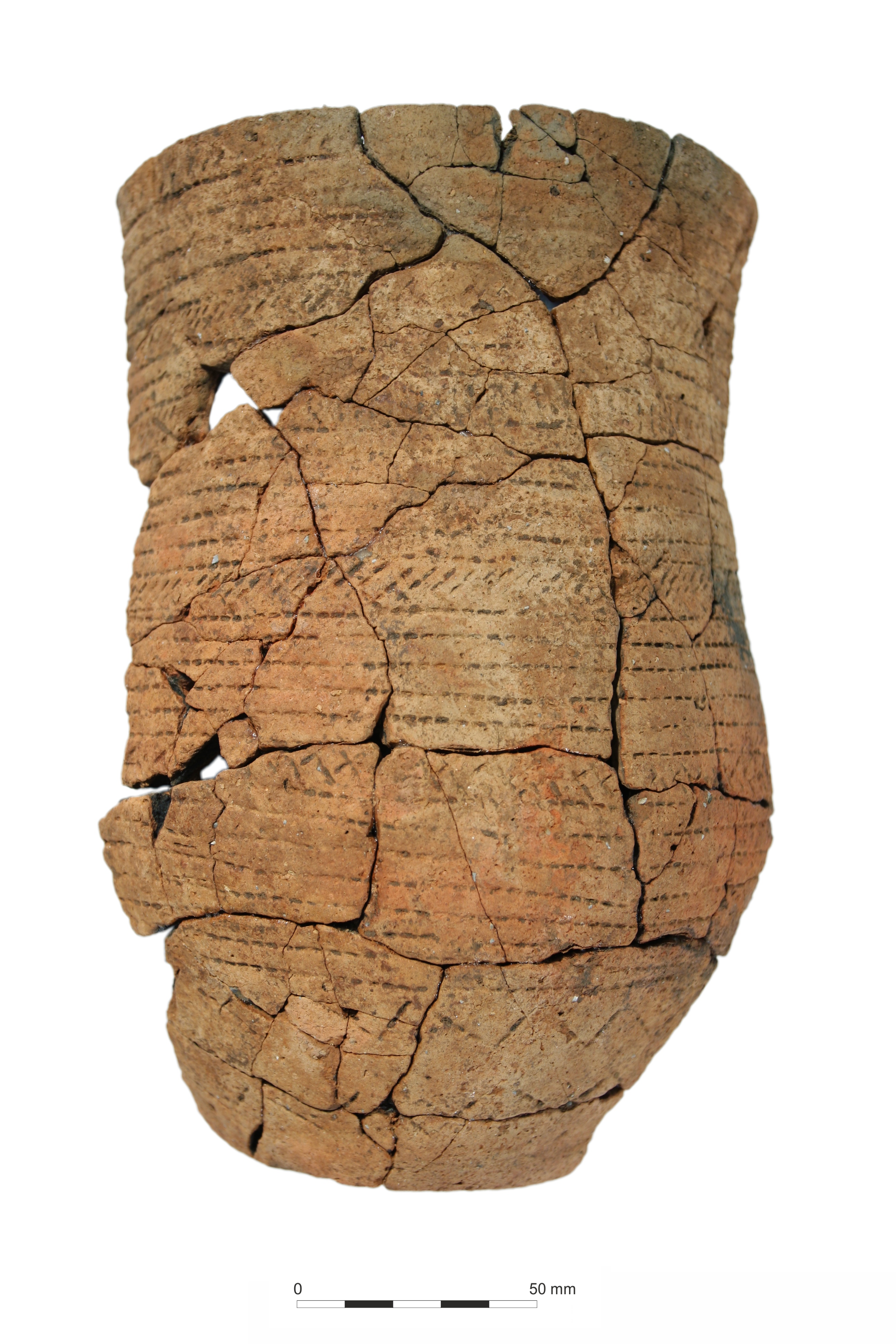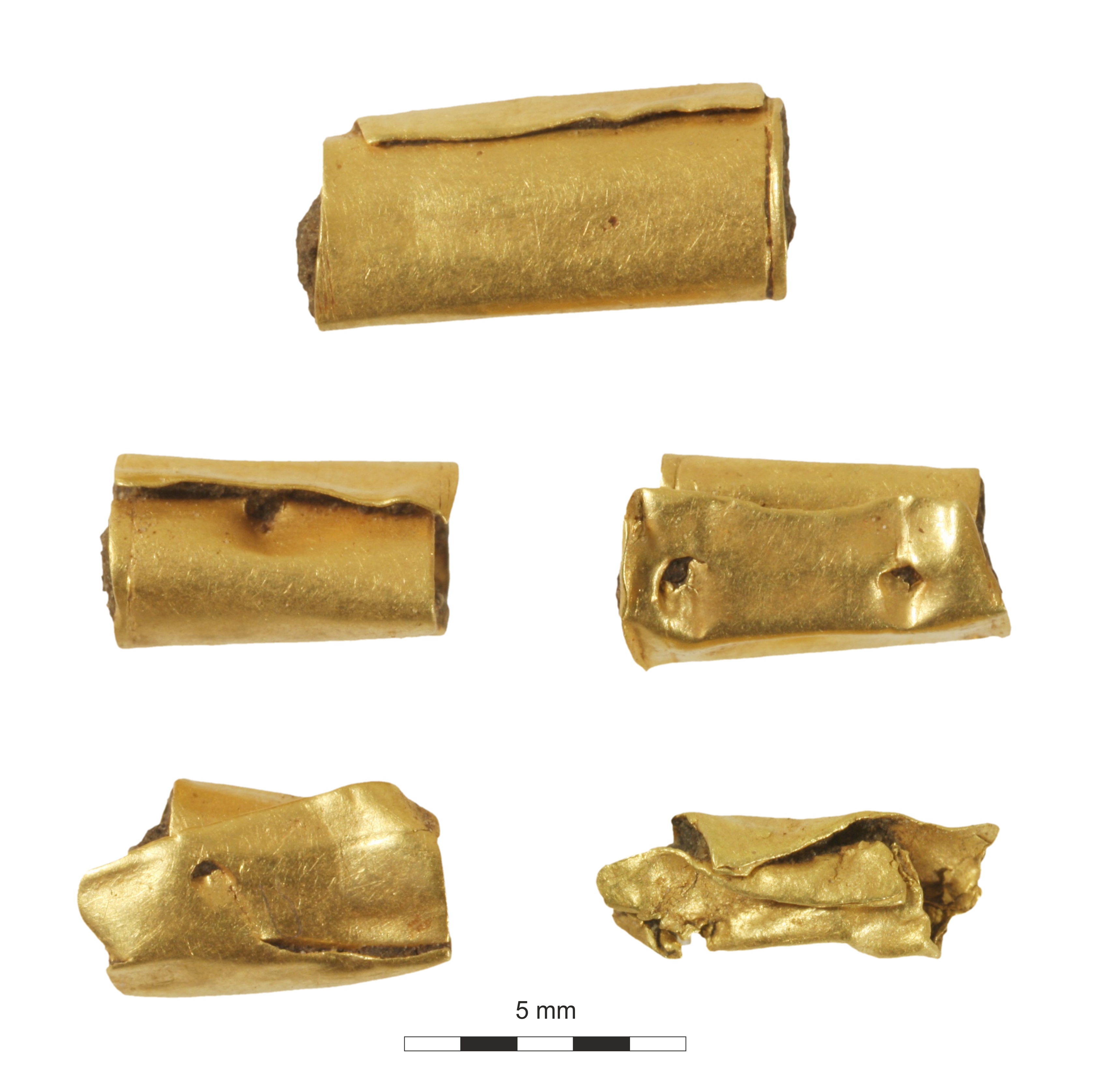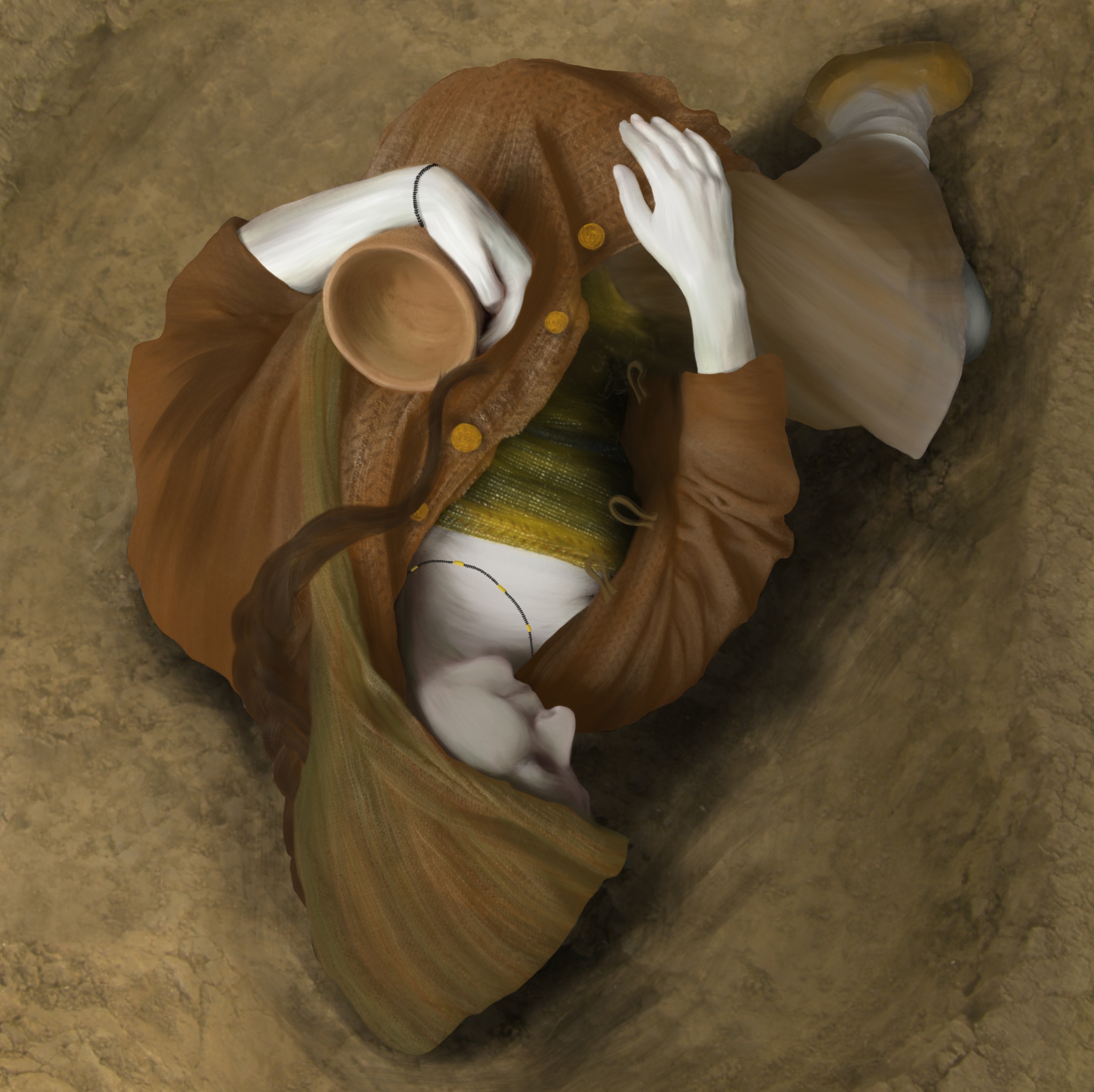
Archaeological excavations at CEMEX’s Kingsmead Quarry in Berkshire not far from Windsor have revealed a rare 'Beaker' burial of 'Copper Age' date (2500-2200 BC). Found within the grave were some of Britain’s earliest gold ornaments (five tubular beads), along with 29 bead fragments of amber and 30 beads of black lignite.
The burial contained the possible remains of a woman who was at least 35 years old. At the time of her burial, she wore a necklace containing small tubular sheet gold beads and black disc beads of lignite - a material similar to jet. A number of larger perforated amber buttons/fasteners were also found in a row along her body, which may indicate that she was wearing clothing, perhaps of patterned woven wool, at the time of her burial. Further lignite beads from near her hands suggest that she wore a bracelet.
The woman’s burial represents an unusual and important find as only a small number of Beaker burials from Britain contain gold ornaments, and most are associated with male skeletons. It would appear that their religious beliefs dictate that most men were buried in a crouched position with the head resting to the north and facing east. With women the body position is often reversed with the head to the south.
The woman was found with a large drinking vessel, unusually placed on her hip rather than by her feet or shoulder. The fine pottery vessel had been decorated with a comb-like stamp.

Beaker using communities lived across Europe around 2,500 BC around about the time of Stonehenge. In more Western regions, such as Britain, they were the first people to use copper and gold (giving rise to the term Copper Age or Chalcolithic). They buried their people in special ways, characteristically with a distinctive type of pot, known to archaeologist as a Beaker. They were also buried with other fine objects such as metal, stone and bone.
Site Director Gareth Chaffey, of Wessex Archaeology, who has been excavating the site for the last seven years, said: “It is interesting to think who this woman was within her community. She was probably an important person in her society, perhaps holding some standing which gave her access to prestigious, rare and exotic items. She could have been a leader, a person with power and authority, or possibly part of an elite family - perhaps a princess or queen.”
Osteologist Jacqueline McKinley (Wessex Archaeology) has examined the skeletal remains, which appear to be those of an adult aged 35 or over, possibly a female. Unfortunately the acid nature of the 'brickearth' soil is far from ideal for the preservation of bone and a lack of surviving collagen limits the possibility of scientific research, such as radiocarbon dating and DNA.
Dr Stuart Needham (an expert in Copper Age metalwork) who is presently studying the gold beads said: “Beaker graves of this date are almost unknown in South East England and only a small number of them, and indeed continental Europe, contain gold ornaments. The tubular beads that were found at Kingsmead Quarry are certainly rare in Britain, and this gives the grave tremendous research importance”.
It is possible that the beads have been fashioned by cutting up other objects made from sheet gold.
The gold beads have been examined by scientists at the University of Bristol and at the University of Reading.

Dr Chris Standish (University of Bristol) who is currently investigating the sources of gold exploited during the Chalcolithic and Early Bronze Age, has used lead isotope analysis to characterise a number of British and Irish gold deposits. This technique has been performed on the five gold beads from the Horton burial.
Dr Standish concludes that “their isotopic signatures are consistent with natural gold deposits located in south-east Ireland and southern Britain”.
Further compositional analyses will shed light on where this gold originated from, and will provide important information relating to the patterns of gold procurement and the extent of trading networks that were in existence prior to the interment of the Kingsmead Quarry burial.
Dr Stuart Black, an archaeological scientist at the University of Reading, has examined the beads using the cutting edge technology at the University’s Centre for Advanced Microscopy (CfAM) to reveal signs of decoration and details of how the beads were made and attached. This includes fine stitching holes on at least three of the beads and scored lines.
The ornaments found within the grave are all the more interesting when you consider where they came from. The gold may have originated from Southern England or Ireland, the lignite beads from Eastern England and the amber buttons/fasteners from as far away as the Baltic or made from amber collected from the east coast of England.

Beaker burials of this type are rare in this region of England and, it was an unexpected find. However, as Dr Alistair Barclay of Wessex Archaeology notes “we know from recent research that an extensive prehistoric landscape is buried beneath the edge of West London and East Berkshire. The Kingsmead Quarry project is currently adding much new and significant information to this unfolding story and challenging our perception and understanding of prehistory.”
The beads will go on display at the end of April at a special two day event organised by CEMEX UK and Wessex Archaeology. And later in the year it is hoped to display the grave finds at a local museum.

The excavations are part of CEMEX’s £4 million archaeological programme on the site, which has been in operation since 2003. Andy Spencer Sustainability Director,
CEMEX UK, said : “
Kingsmead Quarry has given us some wonderful finds, rare and interesting ones like this Beaker burial and the Neolithic houses. Today, as well as an insight into the lives of our ancestors, the site is providing valuable building materials for construction.”
For more information about our work at Kingsmead Horton
click here.




